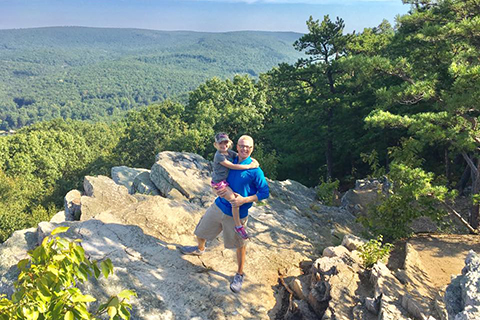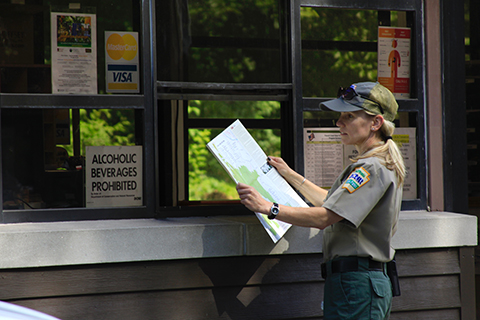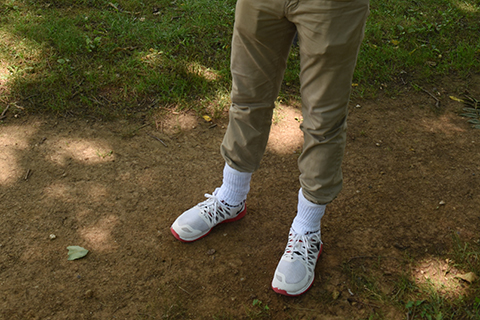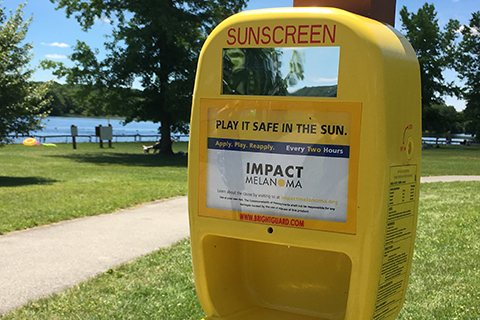Previously Published in PEMA's Monthly Newsletter
Exploring the beautiful, vast Pennsylvania outdoors can be fun and memorable. However, the most important part of any trip is staying safe. Join us as we have a conversation with DCNR’s Bureau of State Parks Assistant Director Ryan Dysinger.
I am planning a trip for my family to a state park. What should I do before going?

Always research the park online prior to your trip. It is important to layout your trip, including where you are going and if it is a multiday trip, how far you will travel each day and how long you plan to stay in each area. Plan enough time for day trips to prevent you from traveling after dark without proper nighttime equipment.
Always tell someone where you are going and expected time of return. Write down your plans and indicate on a map where you are going. Let them know that you will call when you return. Leave a copy of your plan in your vehicle too. Check the park advisories, the weather and ALWAYS check PA511.
Once I get to the state park, what should I know and what should I do to stay safe?

Always make sure you have enough water for your trip. Extra water is better than not enough water! You should be aware of exit roads. Look for park staff to assist you in a time of need. Make sure you are prepared for your trip and know the daily weather conditions you could face.
Dress properly including layers of clothing and especially proper footwear for your specific activity. Long-sleeved shirts and pants are an easy way to protect your skin against bugs, like mosquitos and ticks, as well as scratches from thorny plants and tree branches.
Proper footwear, like boots and sneakers, give the best footing while hiking. Sandals and flip-flops are not hiking friendly. According to park managers at Ricketts Glen State Park, flip-flops were responsible for many of the carry-out injuries on the park's popular Falls Trail.
Check park kiosks for local information pertinent to the park including emergency contact information and hospital directions. Take a picture of it on your phone or jot down the phone numbers before you head out on the trail. Carry a small first aid kit in your hiking pack and keep a larger one in your car or at the campsite.
Carry a flashlight or headlamp – even on a day hike. If you have trouble on the trail, darkness may fall before you can finish your hike.
Remember, you can lose phone service. Do not rely on your cellphone; take a paper map with you. Cellphones and GPS Units are not reliable in remote areas.
A compass is also a helpful tool that is a perfect companion to your map. You can look at a map and talk to folks all day. But when the rubber meets the road and you have to make decisions, you have to be willing to turn around.
You are more likely to make a poor judgment call—ignoring signs your body needs a break, pushing a straggler to keep up, pressing on when a storm rolls in—when you are hyper-focused on getting to an end point.
What if I get lost?
The first thing you can do is acknowledge that you are lost. Remain calm! While this sounds easy, many people will panic when in an undesirable, unfamiliar situation. Remaining calm will help a lost individual make sound, rational decisions.
Stop walking! Walking with unfamiliar landmarks will often lead someone who is lost to wander in circles and potentially cause a longer rescue time. Seek or build a shelter and a fire depending on weather conditions.
I want to have an enjoyable and safe experience. Is there anything else you can tell me?

Please keep all campfires contained in the grills or fire rings. It is a campfire, not a bonfire!
For the sake of your own safety, the natural resources, other hikers, and a potential search party, it is paramount that you stay on that trail. Your odds of encountering a risky obstacle go up when you step off the path. It is also easy to get turned around.
In some places, the vegetation is so thick that signs can disappear really quickly, and if you do get lost or incapacitated off-trail, a rescue mission will be much more difficult and dangerous.
Veering off the trail also leads to what rangers call “social trails,” or unofficial routes carved into the wilderness by wayward hikers. Social trails can trample vegetation, disturb animals, cause erosion, and endanger hikers after you, who might think it is the right way. Be especially careful when taking pictures.
Many times, photographers become more focused on taking a photo rather than securing their footing. Make sure you are in a safe, solid location before snapping your shot. Remember to please not feed the animals in state parks. Feeding any animal will draw them to the roads and lead to many dangerous situations for deer and people.
The park is a natural environment where deer can feed and live off the land. Use insect repellant that contains DEET. Ticks are becoming more prevalent in Pennsylvania. Wear light colored long pants and tuck your pants into your socks when hiking. Wear a loose fitting long sleeve shirt to protect your arms. This will help you spot ticks easier.
Always do a full body tick check after your outdoor adventure. Remove a tick by using tweezers, grasping the tick as close to the skin as possible, and pulling upward. Be sure to disinfect the bite.
Do not pick or eat anything!
Even the most skilled outdoorsman should avoid picking or eating anything growing in a state park. In the wilderness, there’s such a variety of plants that it is easy to misidentify them, even if you are familiar with them. Besides, even taking a small amount from the environment may have an ecological impact you don’t intend.
If hiking with children, plan your hike to their ability and endurance level. Trust me, you do not want to have to carry a 40 pound five-year-old down the trail! To learn more about Pennsylvania State Parks, visit the DCNR website.
Safe fun in the sun!

Beginning in summer 2017, DCNR’s Bureau of State Parks partnered with the Department of Health and began supplying free sunscreen at Pine Grove Furnace State Park, Cumberland County, and Codorus State Park, York County.
In 2018, new parks added were Bald Eagle, Centre County; Gifford Pinchot, York County; and Nockamixon, Bucks County. The program now has been expanded to nine state parks.
The most recently added locations include Little Buffalo, Perry County; Laurel Hill, Somerset County; Presque Isle, Erie County; and Caledonia, Franklin County.
The Bureau of State Parks noted the sunscreen dispenser program has the potential of reaching 500,000 Pennsylvanians at its nine parks.
DCNR Secretary Cindy Adams Dunn points out that “In promoting outdoor activity, we’re aware over 8,500 Americans are diagnosed with skin cancer each day, and these dispensers should prove invaluable to visitors to our lakes, beaches and pools who may overlook sunscreen when packing for a day’s outing.”